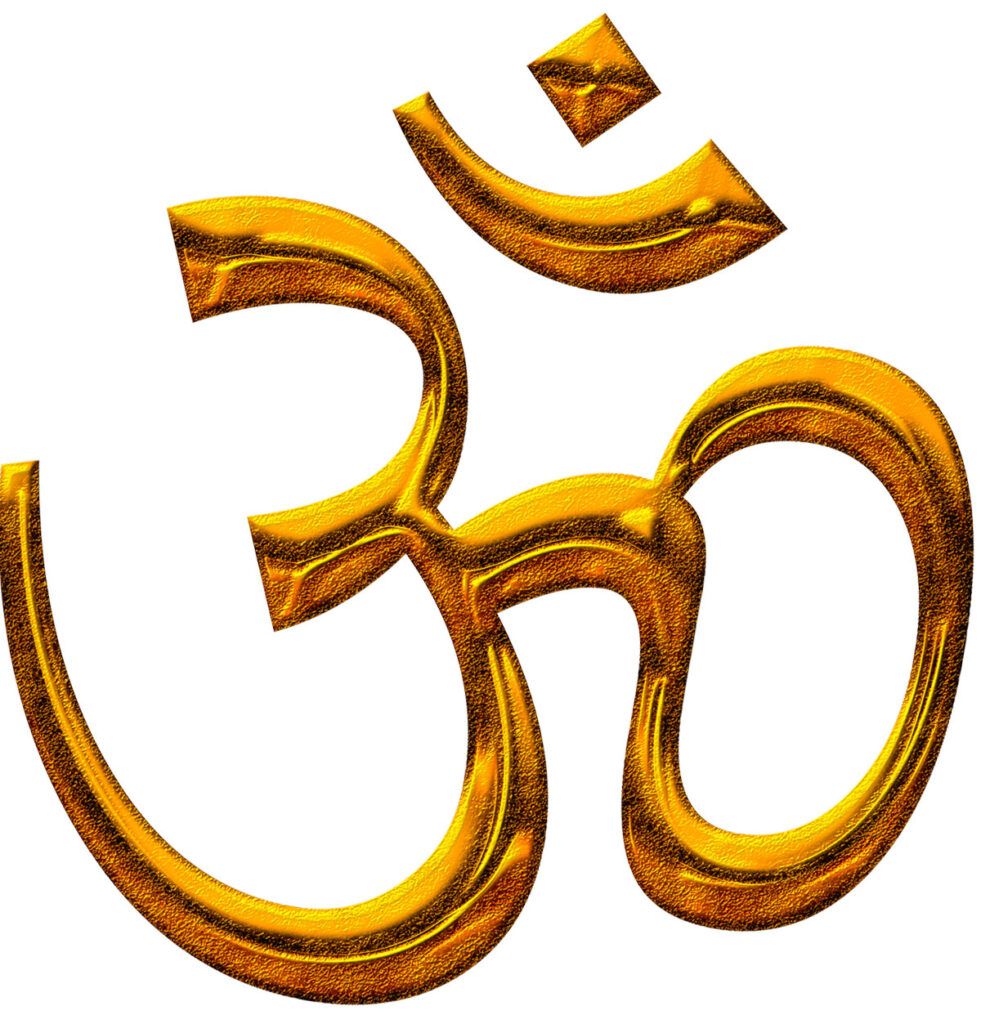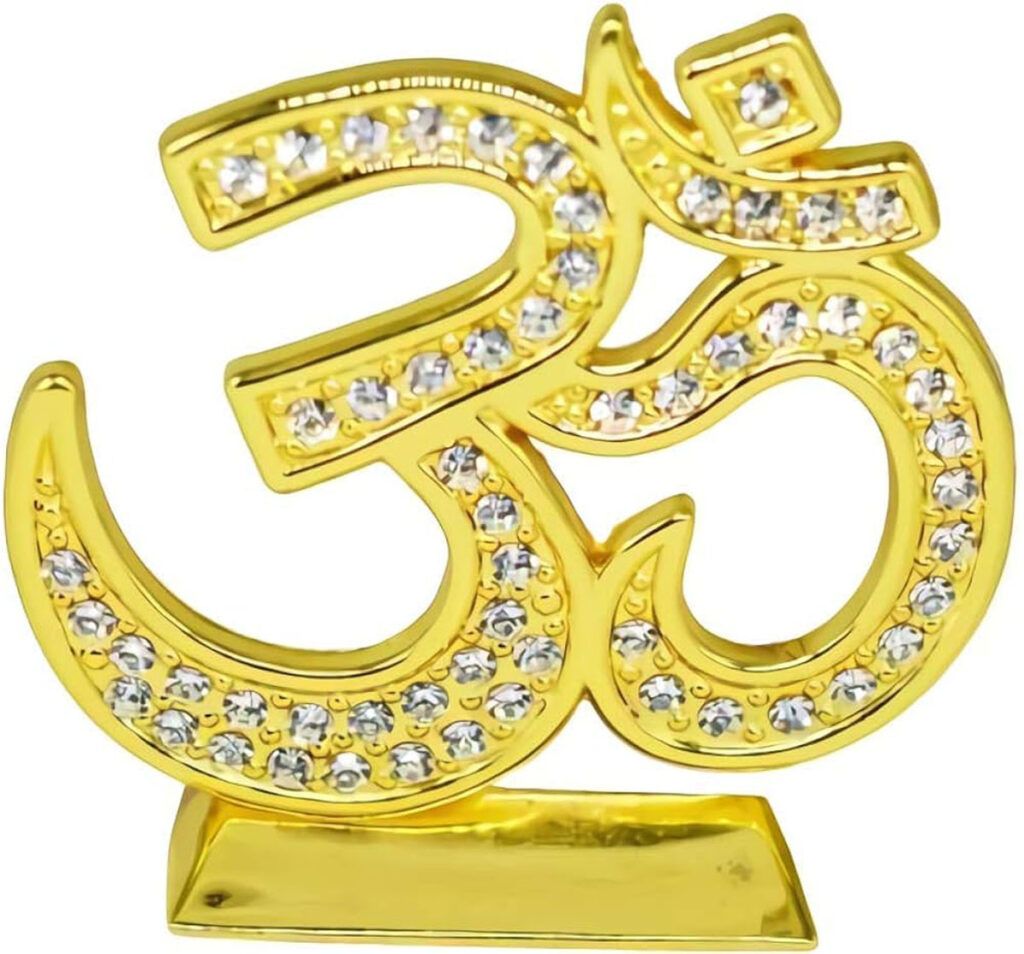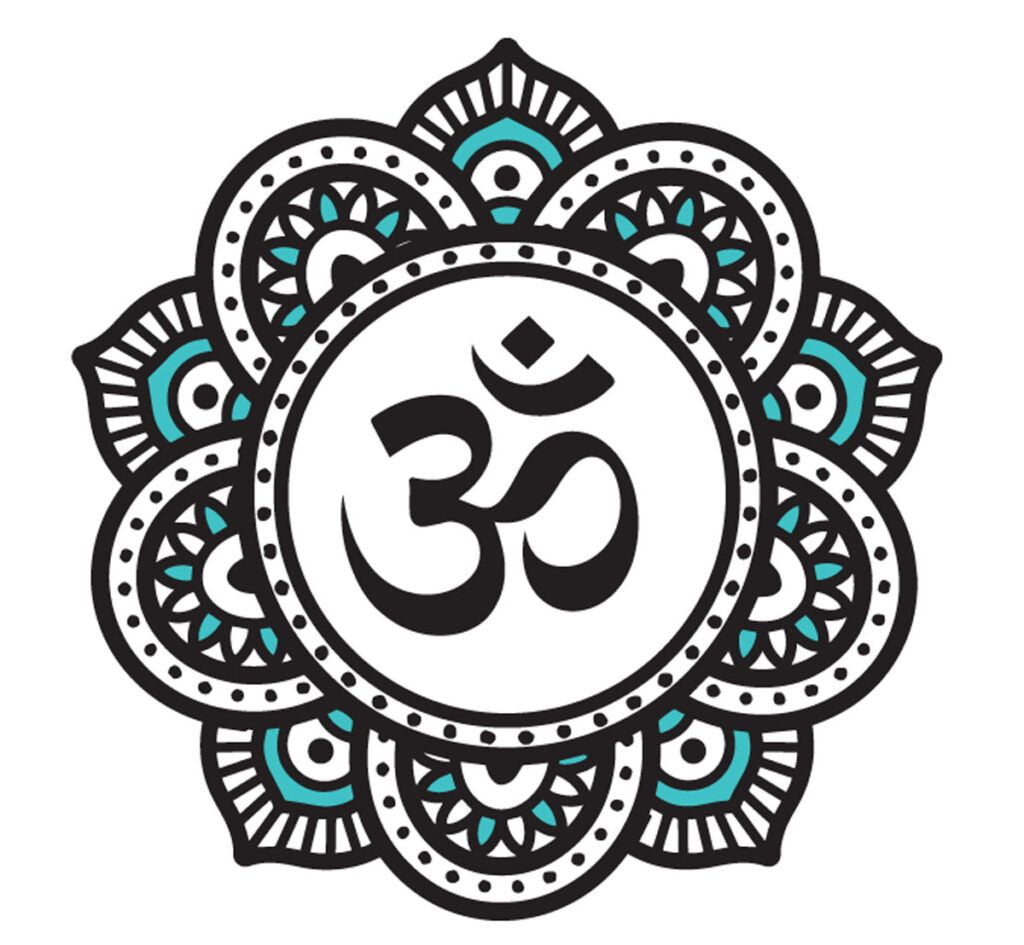Significance of OM Symbol | AUM Symbol
Significance of OM Symbol: The OM symbol, also spelled AUM, is a sacred and ancient icon that holds profound significance in various spiritual traditions, particularly within Hinduism, Buddhism, and Jainism. Its roots can be traced back thousands of years, and it continues to be a powerful emblem that represents the essence of the universe. In this article, we will delve into the origin, meaning, and significance of the OM symbol.

Contents
- 1 Significance of OM Symbol – Ancient Roots:
- 2 Significance of OM Symbol – Symbolism & Representation:
- 3 Significance of OM Symbol in Hinduism:
- 4 Significance of OM Symbol in Buddhism:
- 5 Significance of the OM Symbol in Other Religions:
- 6 Significance of OM Symbol – The Sound of Creation:
- 7 Significance of OM Symbol – Universal Harmony:
Significance of OM Symbol – Ancient Roots:
The origin of the OM symbol is deeply intertwined with the spiritual and philosophical heritage of ancient India. The symbol finds its earliest mentions in the sacred texts of the Vedas, which are among the oldest religious scriptures in the world. The sound “OM” is described as the primordial vibration or the cosmic sound that gave birth to the universe.
Significance of OM Symbol – Symbolism & Representation:
The OM symbol is composed of three Sanskrit letters: A, U, and M. Each of these letters carries its own significance, contributing to the overall symbolism of the symbol.
- A (Akaara): This represents the waking state (Jagruti). It signifies the beginning and creation, symbolizing the physical world and the external aspects of human experience.
- U (Ukaara): This signifies the dream state (Swapna). It represents the mental realm, dreams, and the internal world of thoughts and emotions.
- M (Makara): This represents the deep sleep state (Sushupti). It symbolizes the state of transcendence, inner peace, and the unconscious mind.
The Fourth Element:
In addition to the three letters, there is a fourth component to the OM symbol, which is the silence or the pause that follows the chanting of OM. This silence represents the state of Turiya, the transcendent state of consciousness beyond the waking, dreaming, and deep sleep states. It is a state of pure awareness, often described as the ultimate reality or cosmic consciousness.
Read More>> Omkareshwar Jyotirlinga Temple: Lord of divine word “OM”
Beyond Hinduism:
While the OM symbol is most commonly associated with Hinduism, it has transcended its cultural and religious origins. Buddhism and Jainism, which emerged from the same cultural milieu, adopted the OM symbol with variations in pronunciation and interpretation. In Buddhism, for example, the symbol represents the essence of the teachings of Buddha and the path to enlightenment.
Modern Adoption:
In recent times, the OM symbol has gained popularity beyond its traditional cultural and religious contexts. It has become a symbol of spiritual unity, mindfulness, and universal consciousness. Yoga practitioners worldwide incorporate the chanting of OM at the beginning or end of their sessions, emphasizing its holistic and unifying qualities.

Significance of OM Symbol in Hinduism:
- Representation of the Absolute:
- Om is often described as the sound of the universe or the vibration of the cosmos. It is believed to represent the ultimate reality or the Absolute (Brahman) in Hindu philosophy.
- Trinity of Gods:
- In Hinduism, there is a concept of the Trimurti, which consists of three main deities: Brahma (the creator), Vishnu (the preserver), and Shiva (the destroyer). The three sounds in “Aum” are said to represent these three aspects of the divine.
- Sacred Sound:
- The chanting of Om is considered a powerful and sacred practice. It is believed that repeating the sound of Om can lead to a state of deep meditation, connecting the practitioner with the divine and promoting spiritual growth.
- Symbol of the Divine:
- The visual representation of Om consists of three curves, one semicircle, and a dot. These elements symbolize the waking state (A), the dream state (U), the deep sleep state (M), and the transcendent state (the dot or bindu), respectively. Together, they represent the cycle of creation, preservation, and dissolution.
- Incorporation in Mantras:
- Om is often used as a prefix to many mantras in Hinduism. It is considered a primordial sound from which all other sounds and vibrations emanate. By incorporating Om into mantras, practitioners aim to align themselves with the cosmic energy and divine forces.
- Yoga and Meditation:
- In yoga and meditation, chanting Om is a common practice. It is believed to help calm the mind, increase concentration, and bring about a sense of inner peace. The vibrational quality of the sound is thought to resonate with the energy centers (chakras) of the body.
- Universal Symbol:
- While Om is rooted in Hinduism, it is also recognized and used in other Indian religions such as Buddhism and Jainism. Its universality symbolizes the fundamental unity and interconnectedness of all existence.
Read More>> Sri Sampath Vinayagar Temple Visakhapatnam – Powerful Temple

Significance of OM Symbol in Buddhism:
1. Nature of Reality:
- Represents the ultimate reality, Dharma, similar to Brahman in Hinduism.
- Symbolizes the interconnectedness of all things and the cyclical nature of existence.
- Points towards the impermanence and emptiness (Shunyata) of all phenomena.
2. Path to Enlightenment:
- Chanting OM aids in meditation and concentration practices, crucial for achieving enlightenment.
- Represents the three stages of awakening:
- A (Awakening): Recognizing the true nature of reality.
- U (Transformation): Cultivating compassion and wisdom.
- M (Union): Merging with the ultimate reality.
3. Symbolic Representation:
- Similar to Hinduism, OM can represent various triads:
- Buddha, Dharma, and Sangha (Three Jewels)
- Sila (Morality), Samadhi (Concentration), and Panna (Wisdom)
- Greed, Hatred, and Delusion (Three Poisons)
4. Universal Symbol:
- Transcends specific interpretations and holds universal meaning across various Buddhist traditions.
- Represents peace, harmony, and the interconnectedness of all beings.
- Holds reverence for the Buddha and his teachings.
5. Usage in Buddhist Practices:
- OM is chanted regularly during meditation and chanting sessions.
- Often used at the beginning and end of Buddhist prayers and rituals.
- Depicted in various Buddhist art forms and mandalas.
6. Differences from Hinduism:
- While Hinduism emphasizes the personal experience of Brahman, Buddhism focuses on liberation from suffering and achieving Nirvana.
- The interpretation of the sounds within OM might slightly differ in different Buddhist schools of thought.
Read More>> Significance of Lord Ganesha Idol

Significance of the OM Symbol in Other Religions:
While the OM symbol holds its strongest association with Hinduism, its profound meaning and universal appeal have led to its adoption and adaptation in other religious traditions. Here’s a glimpse into its significance across different faiths:
Jainism:
- Represents the seven tattvas (truths) of Jainism: soul, matter, influx of karmic particles, stoppage of karma, bondage, liberation, and moksha (ultimate liberation).
- Used in Jain chants and meditations to achieve inner peace and spiritual liberation.
Buddhism:
- Represents the Buddha, the Dharma (teachings), and the Sangha (community).
- Used in Buddhist chants and meditations to cultivate mindfulness, compassion, and wisdom.
- Often depicted with the Tibetan mantra “Om Mani Padme Hum,” a powerful prayer for peace, compassion, and enlightenment.
Sikhism:
- Represents the Onkar, the one supreme reality.
- Chanted as “Ek Onkar,” signifying the oneness of God.
- Used in Sikh prayers and meditations to connect with the divine and achieve spiritual liberation.
Baha’i Faith:
- Represents the unity of God and all creation.
- Used in Baha’i prayers and meditations to promote unity, love, and peace among people of all faiths and backgrounds.
Sufism:
- Represents the divine breath and the connection between the human and the divine.
- Used in Sufi chants and meditations to achieve a state of spiritual ecstasy and union with God.
Metaphysical and New Age Traditions:
- Viewed as a symbol of universal energy and consciousness.
- Used in meditation and energy healing practices to promote well-being, balance, and spiritual growth.
Universal Appeal:
Beyond specific religious interpretations, the OM symbol resonates with individuals seeking peace, harmony, and a connection to something larger than themselves. Its simple yet profound meaning transcends cultural and religious boundaries, making it a powerful symbol for our interconnected world.
Significance of OM Symbol – The Sound of Creation:
In Hindu cosmology, it is believed that the universe originated from the cosmic vibration of OM. This primordial sound is considered the essence of all other sounds, representing the underlying, unchanging reality amidst the chaos of the material world. Chanting OM is thought to align the individual with this cosmic vibration, allowing one to connect with the divine source and experience a sense of oneness with the universe.
Meditative Power:
OM serves as a powerful tool in meditation, yoga, and spiritual practices across various traditions. The rhythmic chanting of OM is believed to have a calming effect on the mind, promoting inner peace and heightened awareness. As the vibrations of OM permeate through the body, practitioners often report a profound sense of unity with the cosmos, transcending the boundaries of the self.
Scientific Perspective:
Beyond its spiritual significance, there is growing interest in the scientific community regarding the effects of chanting OM. Studies suggest that the rhythmic repetition of this sacred sound can have positive impacts on the nervous system, reducing stress and promoting a sense of well-being. The resonance of OM is thought to synchronize brainwaves, inducing a state of deep relaxation and clarity.
Global Appeal:
While rooted in Hindu and Vedic traditions, the universal themes encapsulated by OM have transcended cultural and religious boundaries. Many spiritual seekers, regardless of their background, incorporate the chanting of OM into their practices. The sound has found its way into various global spiritual movements, symbolizing a shared quest for inner harmony and connection with the divine.
Significance of OM Symbol – Universal Harmony:
At its core, the Om symbol encapsulates the concept of universal harmony. It teaches us that everything in the cosmos is interconnected and interdependent. The vibrations produced by the chanting of Om are believed to align the individual with the harmonious rhythm of the universe, promoting a sense of balance and well-being.
Meditation and Mindfulness:
The practice of chanting Om has been a central component of meditation and mindfulness for centuries. As individuals focus on the rhythmic repetition of the sacred sound, they create a deep resonance within themselves, fostering a connection to the universal energy that permeates all of creation. This meditative process serves as a pathway to inner peace and self-realization.
Cultural Significance:
While originating in ancient Indian traditions, the Om symbol has transcended its cultural roots and has been embraced by people worldwide. Its universal appeal lies in its capacity to resonate with the human spirit, transcending linguistic and cultural barriers. The Om symbol serves as a unifying force, reminding individuals of their shared humanity and interconnectedness.
Yoga and Spiritual Practices:
In the realm of yoga, the Om symbol plays a central role. Many yoga practitioners begin and end their sessions with the chanting of Om, creating a sacred space for self-discovery and spiritual exploration. The resonance of the sound is believed to cleanse the mind and elevate consciousness, leading to a heightened state of awareness and presence.
Inclusivity and Tolerance:
The Om symbol stands as a testament to the principles of inclusivity and tolerance. Its widespread acceptance across diverse cultures and religious backgrounds fosters a sense of unity among humanity. In a world often marked by divisions, the Om symbol encourages individuals to embrace diversity and celebrate the shared spiritual journey that unites us all.
Artistic and Decorative Expression:
Beyond its spiritual significance, the OM symbol has become a popular motif in art, jewelry, and home decor. Its aesthetic appeal, combined with its deep spiritual meaning, has made it a symbol that transcends religious affiliations and is embraced by individuals seeking a sense of inner peace and balance.

One Comment